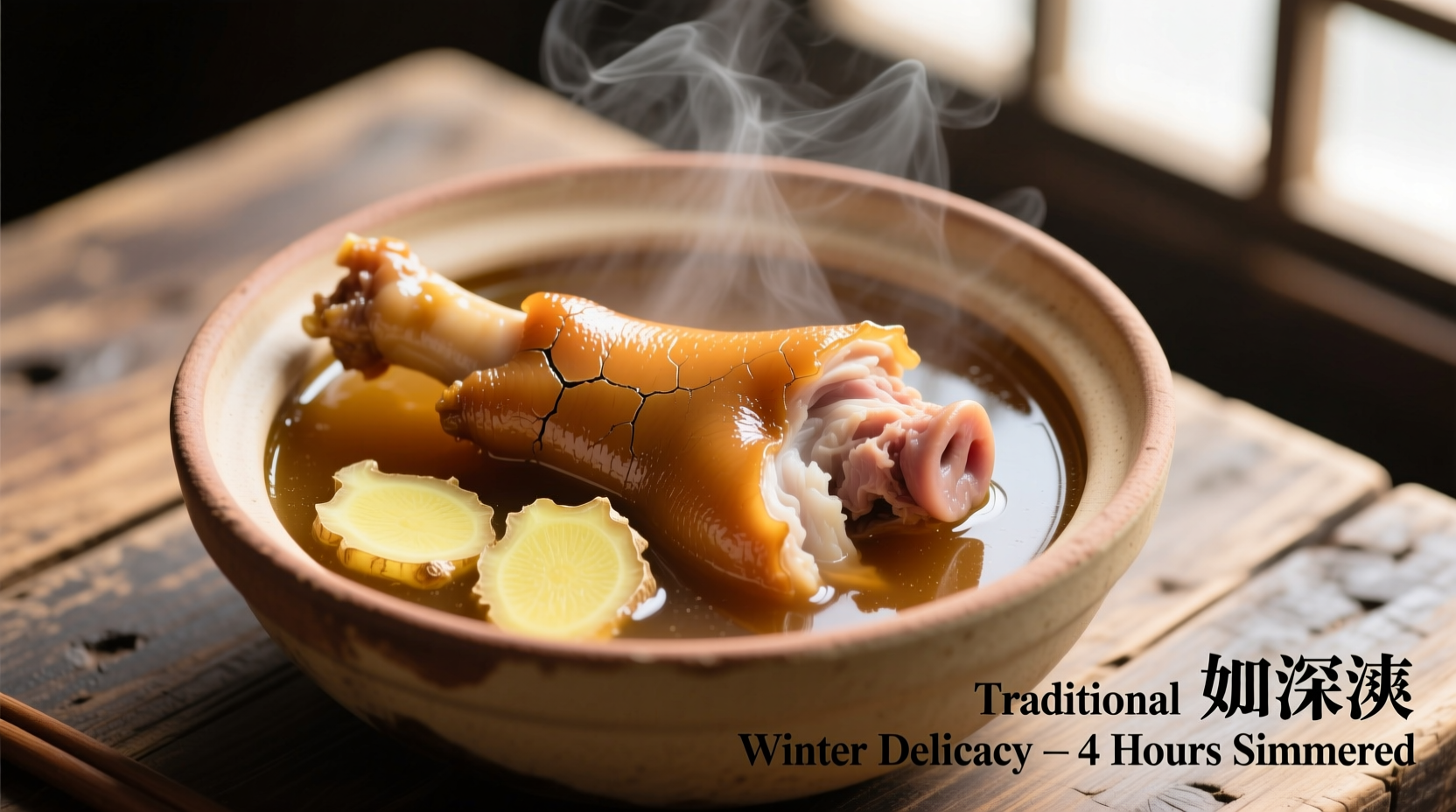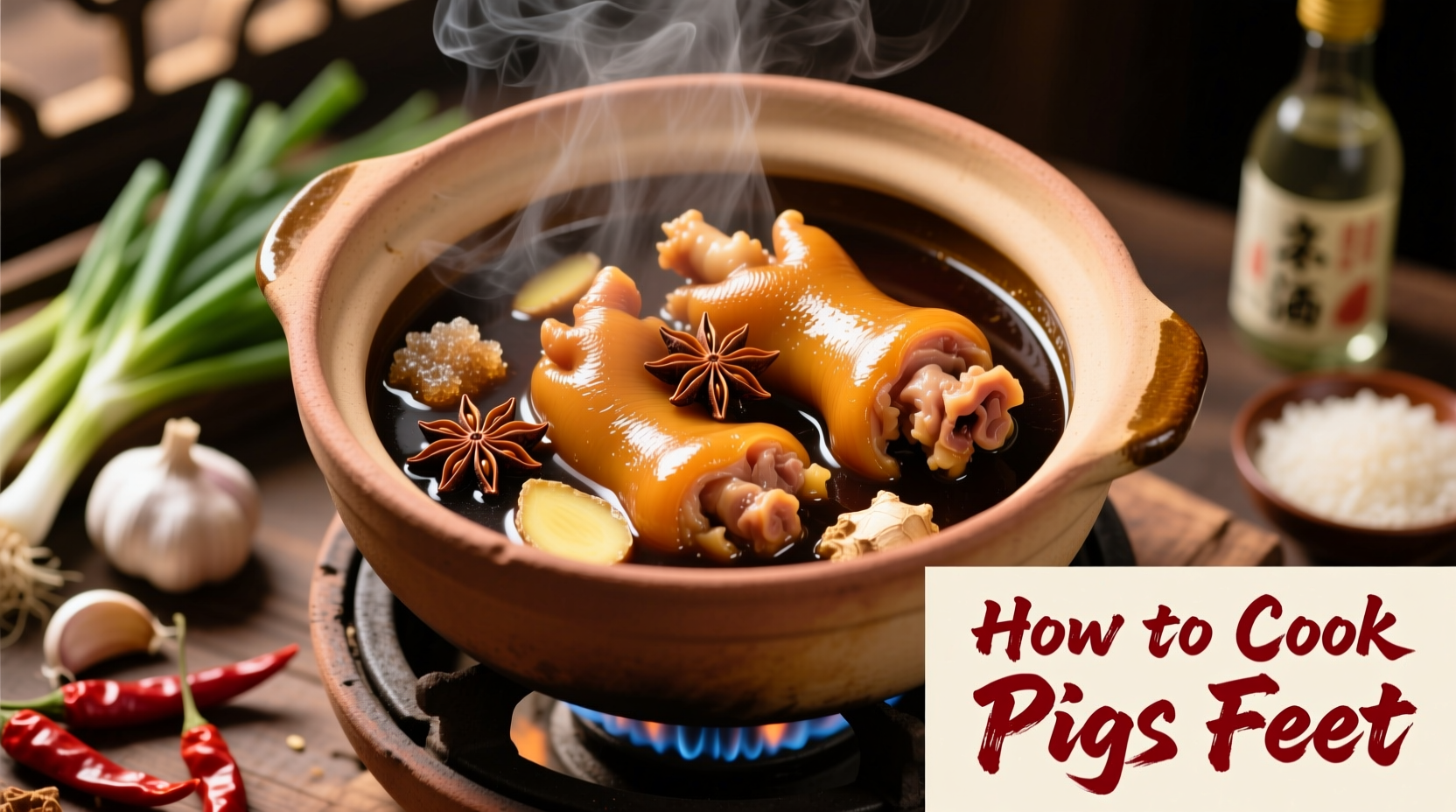Perfectly cooked pig's feet require thorough cleaning, 2.5-3 hours of simmering with aromatic ingredients, and proper seasoning. This guide delivers a foolproof method for tender, flavorful results with regional variations and food safety tips.
Many home cooks struggle with pig's feet, ending up with tough, bland results or unsure how to properly prepare this affordable cut. As a chef with decades of experience working with traditional offal dishes, I've perfected a method that guarantees tender, flavorful pig's feet every time—whether you're following Southern, Chinese, or Caribbean traditions.
The Essential Preparation Process
Before cooking begins, proper preparation makes all the difference. Start with fresh or thawed pig's feet that have been thoroughly cleaned at the butcher. Your first critical step is removing any remaining hair—a process called singeing. Run a kitchen torch over the surface until hairs burn away, then scrape with a knife and rinse under cold water.
Next, soak the feet in a solution of 1 cup white vinegar and 4 cups cold water for 30 minutes. This acidic bath removes impurities and reduces any strong odors. The USDA Food Safety and Inspection Service recommends this acid-based cleaning method for pork offal to ensure proper sanitation (USDA FSIS guidelines).

Regional Cooking Methods Compared
Different culinary traditions approach pig's feet uniquely. Understanding these variations helps you select the perfect method for your taste preferences:
| Regional Style | Key Ingredients | Cooking Time | Texture Result |
|---|---|---|---|
| Southern US | Vinegar, onions, black pepper | 2.5-3 hours | Firm but tender |
| Chinese | Ginger, star anise, Shaoxing wine | 1.5-2 hours | Gelatinous, fall-off-bone |
| Caribbean | Scotch bonnet, thyme, allspice | 2 hours | Rich, collagen-rich broth |
Step-by-Step Cooking Instructions
For classic Southern-style pig's feet:
- After cleaning, place 4 pig's feet in a large pot with 8 cups water, 1 sliced onion, 3 smashed garlic cloves, 2 bay leaves, and 1 tablespoon black peppercorns
- Bring to a rolling boil, then immediately reduce to a gentle simmer
- Cover and cook for 2.5-3 hours until fork-tender but not falling apart
- Add 1/4 cup apple cider vinegar during the last 30 minutes
- Remove from heat and let rest in broth for 20 minutes before serving
For pressure cooking, reduce time to 45-60 minutes at high pressure followed by natural release. The University of Florida IFAS Extension confirms pressure cooking maintains collagen structure while significantly reducing cooking time (UF/IFAS Food Science Publication).
Achieving Perfect Texture and Flavor
Pig's feet contain abundant collagen that transforms into gelatin during slow cooking. The texture development follows this timeline:
- 0-60 minutes: Initial softening, meat begins separating from bone
- 60-120 minutes: Collagen starts breaking down, texture becomes chewy
- 120-180 minutes: Optimal tenderness achieved, gelatin fully developed
- 180+ minutes: Risk of overcooking, texture becomes mushy
Seasoning is critical—add salt in the last hour of cooking. Acid components like vinegar or citrus should be added near the end to preserve their bright flavor. Professional chefs at the Culinary Institute of America emphasize that proper acid timing prevents flavor dulling during extended cooking (CIA Culinary Resources).
Food Safety and Serving Recommendations
Always verify doneness with a food thermometer—pig's feet should reach 160°F (71°C) internally. Store leftovers in their cooking broth to maintain moisture. Properly stored in airtight containers, they'll keep for 3-4 days refrigerated or up to 3 months frozen.
Serve with cornbread for Southern style, steamed rice for Chinese preparation, or breadfruit in Caribbean presentations. The collagen-rich broth makes an excellent base for soups or stews—simply strain and use within 5 days.
Troubleshooting Common Issues
Tough texture? Extend cooking time by 30-60 minutes. Toughness usually indicates insufficient cooking time for the collagen breakdown.
Bland flavor? Add seasoning elements in stages—aromatics at the beginning, salt in the last hour, and acid in the final 30 minutes.
Unpleasant odor? Ensure thorough pre-cooking cleaning with vinegar soak and proper scalding to remove surface impurities.
How long should I cook pig's feet for tender results?
Simmer pig's feet for 2.5-3 hours for traditional methods or 45-60 minutes in a pressure cooker. They're done when a fork easily pierces the skin and the meat separates slightly from the bone without falling off completely.
What's the best way to clean pig's feet before cooking?
First remove hair with a kitchen torch, then scrape clean. Soak in a solution of 1 cup vinegar to 4 cups water for 30 minutes, scrubbing with a brush. Rinse thoroughly under cold running water before cooking.
Can I cook pig's feet in a slow cooker?
Yes, cook on low for 8-10 hours or high for 4-5 hours. The slow cooker's gentle heat works well for breaking down collagen. Ensure the feet are fully submerged in liquid for best results.
Why do my pig's feet have a strong odor after cooking?
Strong odors usually indicate insufficient cleaning. Always soak in vinegar solution before cooking and change the water after the initial boil. Adding aromatic ingredients like ginger, garlic, and bay leaves during cooking helps neutralize any remaining odors.











 浙公网安备
33010002000092号
浙公网安备
33010002000092号 浙B2-20120091-4
浙B2-20120091-4